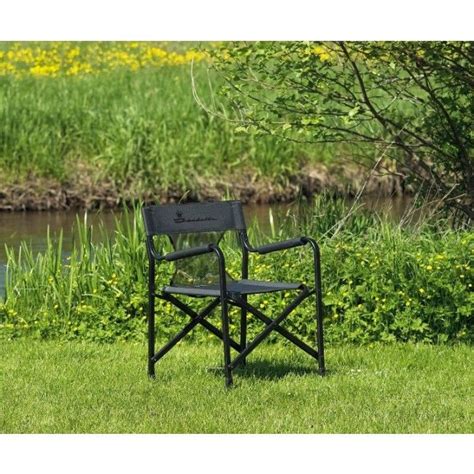A pergola can transform your outdoor space into a stylish and functional area for relaxation and entertaining. Whether you’re looking to enhance your backyard or create a shaded retreat, building a pergola is a rewarding project that adds value to your home. In this guide, we’ll walk you through the process of constructing a pergola, from planning and design to the final touches. By choosing the right materials and following step-by-step instructions, you’ll be able to build a durable and beautiful pergola that fits your space perfectly. With a bit of preparation and effort, you can create a stunning outdoor feature that will stand the test of time while enhancing your home’s aesthetics and usability.
Join shzow.com for a detailed examination of this topic.
1. Introduction
A pergola is more than just an outdoor structure; it’s a versatile addition to any home, offering both aesthetic appeal and practical functionality. Whether you’re seeking a shaded area for relaxation, a focal point for your garden, or a cozy space for outdoor dining, a pergola can significantly enhance your living space. It provides a stylish solution for maximizing outdoor areas while allowing natural light and air to flow freely.
Building a pergola might seem intimidating, but with a well-defined plan and the right approach, it can be a rewarding and enjoyable DIY project. Not only will you have the satisfaction of creating something yourself, but you’ll also have a custom-made structure that perfectly matches your preferences and enhances your home’s aesthetic. This guide aims to guide you through every step of building a pergola, from start to finish.
This guide covers every aspect of building a pergola, from the initial planning and design to selecting the right materials and preparing the construction site. You’ll find detailed, step-by-step instructions to create a durable and visually appealing pergola that enhances your outdoor area. Whether you’re a seasoned DIYer or just starting out, this comprehensive guide will provide you with the knowledge needed to build a pergola you’ll love for years to come.

2. Planning and Designing
Building a pergola requires careful planning and design to ensure it meets your specific needs, both functionally and aesthetically. Begin by defining the primary purpose of your pergola. Is it intended as a shaded relaxation area, a space for outdoor dining, or a decorative garden element? Clearly understanding its purpose will guide your choices regarding size, shape, and the ideal location for your pergola.
Next, think about the design that best suits your home and outdoor space. Pergolas come in a variety of styles, from simple, minimalist structures to more complex designs with intricate details. You’ll also need to decide whether you want an attached or freestanding pergola, depending on the layout of your area.
With a clear design in mind, take precise measurements of the designated area to guarantee a perfect fit for your pergola. It is crucial to consult local building codes and regulations, as some areas may require permits for construction. Developing a comprehensive plan, including detailed dimensions and material specifications, will serve as a roadmap for the project. Thorough planning facilitates a smoother construction process and helps prevent costly errors, paving the way for a successful pergola build.

3. Choosing the Right Materials
Selecting the right materials for your pergola is crucial for both its durability and appearance. The most common material choices are wood, metal, and vinyl, each offering unique benefits. Wood, particularly cedar or redwood, is popular due to its natural beauty and ability to withstand outdoor conditions. It can be stained or painted to match your home’s style, though regular maintenance like sealing is required to prevent weathering.
Metal pergolas, typically made from aluminum or steel, offer a modern look and require less upkeep than wood. They are resistant to rot, pests, and rust, making them a durable option for long-term use.
Vinyl pergolas are another low-maintenance choice, providing a clean, contemporary aesthetic. While not as strong as wood or metal, vinyl is resistant to fading, cracking, and weather damage.
When choosing materials, also consider the hardware and fasteners needed for the project. Opt for corrosion-resistant screws and brackets to ensure longevity. Ultimately, selecting the right materials ensures your pergola is both structurally sound and visually appealing for years to come.

4. Preparing the Site
A well-prepared site is essential for a stable and secure pergola. Begin by carefully choosing the perfect spot, considering factors like sunlight, shade, and proximity to other yard features, including trees, fences, and patios. Make sure the chosen area is level and free of any obstructions, such as rocks, plants, or debris.
First, use stakes and string to mark the dimensions of the pergola directly on the ground. This will give you a clear visual representation of the pergola’s layout and ensure it fits perfectly within the chosen area. Double-check all measurements to guarantee their accuracy.
When constructing a freestanding pergola, excavate holes at the designated spots for the posts. The depth of these holes is crucial for providing robust support to the structure. As a general guideline, aim for a depth of 18 to 24 inches, taking into account the pergola’s overall height.
To ensure the stability of your pergola, especially when exposed to wind or weather, consider anchoring the posts with concrete. Allow the concrete to fully set before continuing construction. This thorough site preparation will result in a strong, level, and securely anchored pergola that will stand the test of time.
5. Building the Pergola
With the site prepared and the posts firmly anchored, construction of the pergola can commence. Begin by installing the vertical posts, confirming their plumb and level alignment. These posts constitute the structural backbone of the pergola, making accurate alignment crucial. Temporary bracing may be required while assembling the remaining structure.
Next, connect the posts at the top with horizontal beams. Securely attach these beams using metal brackets or heavy-duty screws. Make sure they are level and spaced as per your design plan. For larger pergolas, additional support beams may be necessary to ensure stability.
After securing the beams, install the rafters along the top. These rafters create the pergola’s signature open roof, permitting light and air to flow freely. Ensure the rafters are spaced evenly, typically between 12 and 24 inches apart, depending on your desired level of shade.
Once the rafters are firmly in place, you can personalize your pergola with decorative elements like end caps or lattice panels. Ensure all fasteners are secure, and double-check the stability of the entire structure. With the framework complete, your pergola is ready for the final touches, transforming it into a breathtaking outdoor addition.
6. Adding Finishing Touches
Adding finishing touches to your pergola enhances both its appearance and functionality. Begin by sanding any rough edges on the wood to create a smooth, polished surface. For wooden pergolas, apply a protective stain or sealant to shield against the elements and extend its lifespan. Select a color that complements your home’s exterior or aligns with your desired aesthetic. For metal pergolas, consider painting or powder-coating to add color and provide additional protection against rust.
To enhance the pergola’s functionality, consider incorporating additional features. Install lighting, like string lights or LED fixtures, to establish a warm atmosphere for evening enjoyment. Furthermore, adding curtains or fabric panels can provide supplementary shade and privacy. These can be suspended from the rafters or integrated using a retractable system for adaptability.
To increase the pergola’s beauty and create more shade, think about planting climbing plants or vines. By planting these climbing species at the pergola’s base, they can naturally grow upwards and intertwine with the rafters, creating a stunning, shaded effect.
To finish your pergola, arrange furniture or outdoor decorations. Comfortable seating, cushions, and decorative elements can turn your pergola into a welcoming and functional outdoor haven. It’s the ideal spot to relax or entertain guests.
7. Maintenance Tips
To keep your pergola looking its best and extending its lifespan, regular maintenance is key. For wooden pergolas, frequent inspections are vital. Look for signs of rot or insect damage and take care of them immediately. Clean the surface regularly with a mild soap solution and a soft brush. Finally, apply a protective stain or sealant every one to two years to shield it from the elements.
Metal pergolas, while requiring less maintenance than other materials, still demand some attention. Regularly inspect for signs of rust or corrosion, focusing on joints and connections. Periodically clean the metal with soapy water and a cloth to remove dirt and grime. If rust is present, sand it off and apply a rust-inhibiting primer followed by paint to prevent further deterioration.
To maintain the pristine look of your vinyl pergola, a simple cleaning with mild detergent and water is all that’s needed. Avoid using harsh chemicals or abrasive tools, as they can damage the protective finish.
To keep your pergola in top condition and prevent structural issues, make sure to regularly trim any climbing plants or vines. This simple maintenance will help your pergola stay beautiful and functional for years to come, adding value to your outdoor space.
8. Conclusion
A pergola can significantly enhance your outdoor living area, providing both aesthetic appeal and practical benefits. Careful planning and design, along with selecting suitable materials and following the steps for site preparation, construction, and finishing, will result in a beautiful and durable structure that increases your home’s value. The finishing touches, such as protective coatings and decorative elements, not only enhance the pergola’s appearance but also contribute to its lasting quality.
Maintaining your pergola regularly is crucial for its longevity and aesthetic appeal. Consistent cleaning and inspections allow you to identify and address potential problems early on, preventing them from escalating into serious issues. This proactive approach ensures your pergola stays a beautiful and functional addition to your outdoor space.
A well-constructed pergola provides a stylish sanctuary for relaxation, dining, or entertaining. The effort invested in this DIY project will be richly rewarded with a functional and attractive addition to your home’s outdoor space, enhancing your enjoyment of your living area for years to come.
shzow.com
